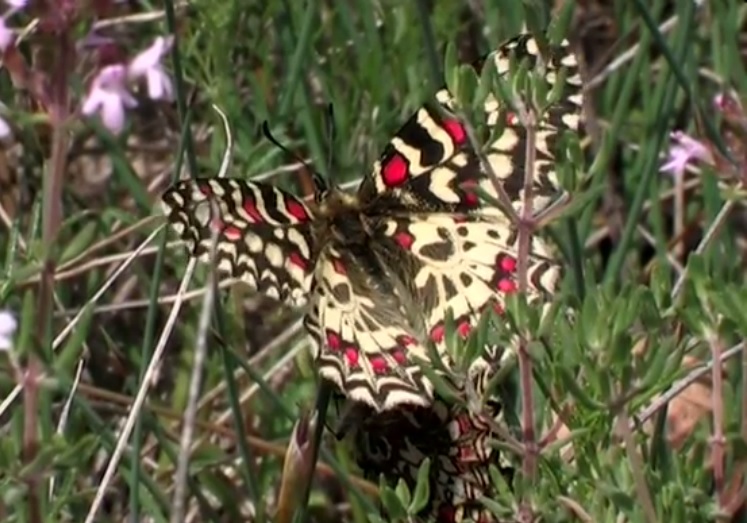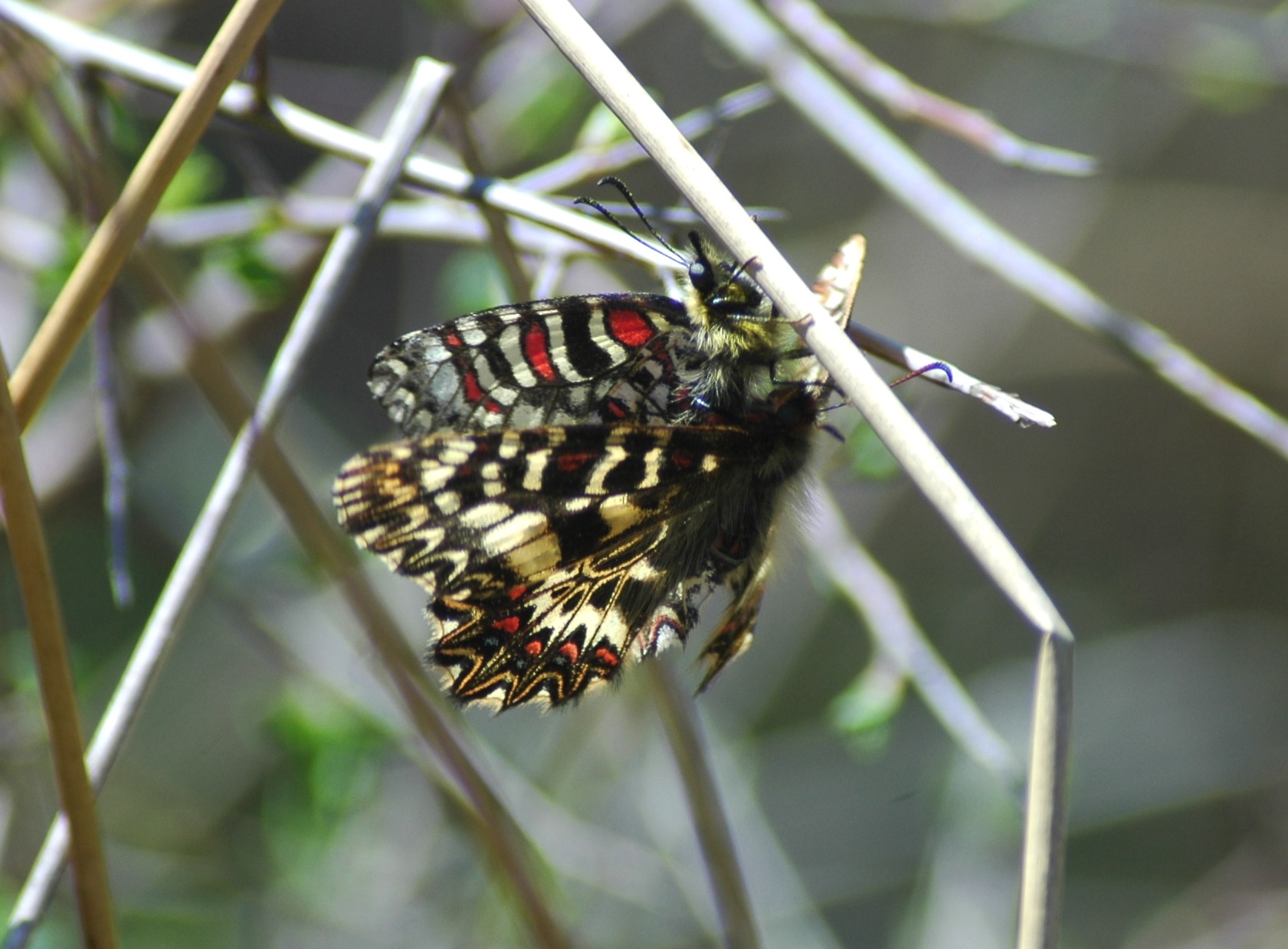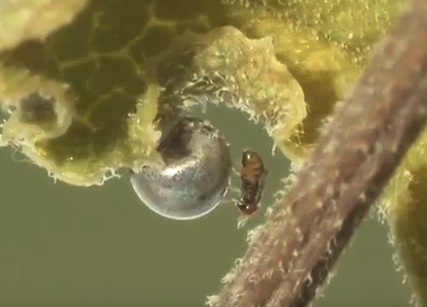

In Provence, the Spanish festoon flies in a single generation from the end of March until the end of June and favors dry and stony areas in the Garrigue, where small, much localized populations live. Males stay close to where they have emerged and are very territorial. The male occupy a post and patrols energetically over its territory with a low, swaying flight. As soon as a female approaches the male goes to meet her and a short agitated nuptial flight follows, the male pursuing the female. The male catches the female, and blocks her between his folded wings, then they fall together in the vegetation where mating ensues. After mating the female begins laying her eggs, without delay on the flowers and leaves of its preferred plant Birthwort (Aristolochia pistolochia).

An extract of the documentary of the Spanish Festoon (Zerynthia rumina) in its dry habitat and the Southern Festoon (Zerynthia polyxena) in its wetland habitat. See their life-cycle from mating, egg-laying on their remarkable host-plants from the genus Aristolochia , the development of the caterpillars and hatching of the chrysalises of these beautiful butterflies. An inter-specific crossing was photographed in spring 2004. The previous year devastating forest fires have created corridors between dry and humid habitats that some females have explored, through the habitat of the other species.

Parasitoids
In the spring of 2014 for the first time in France Trichogramma evanescens (Westwood, 1833) & T. nubilale Ertle & Davis, 1975, were reard from the eggs of Zerynthia rumina. Under normal circumstances the caterpillar of the Spanish Festoon hatch after about 8 days. After about 6 days the eggshell becomes transparent, revealing the black caterpillar that hatches within two days. If the eggs are black for more than 4 days they are parasitized. Parasitized eggs get a black metallic colour. From these eggs T. evanescens emerged and from pearl coloured eggs T. nubilale emerged. These species belong to some of the tiniest wasps (Hymenoptera) of the Chalcidoidea and parasitize eggs of many different insect orders, but are mainly reared from eggs of butterfly species. From another parasitized egg of the Spanish Festoon T. gicia was identified. T. evanescens is commercially reared as biological control of pests.
Trichogramma evanescens is identified by Dr JeanYves Rasplus
Trichogramma nubilale is identified by Géraldine Groussier
